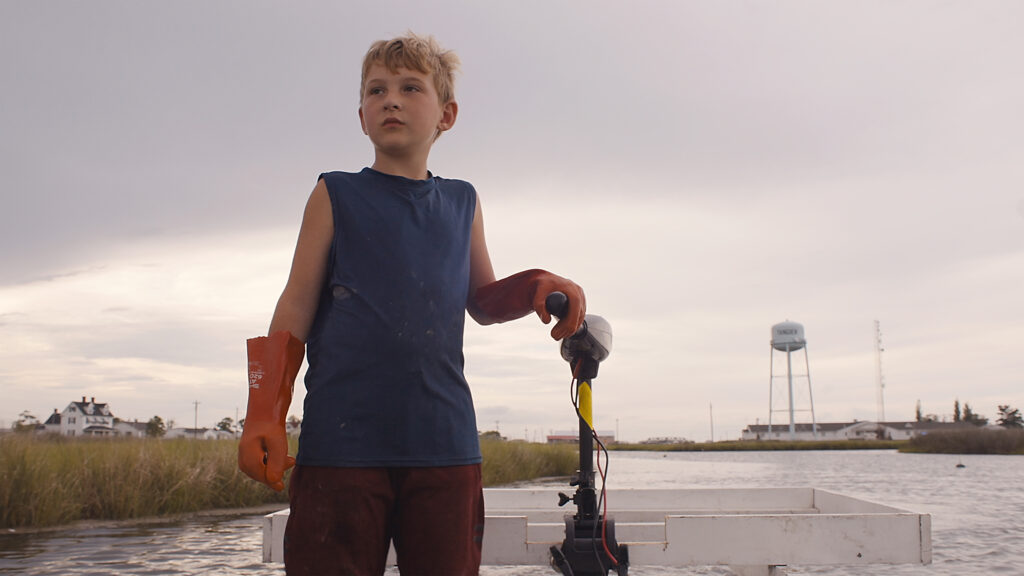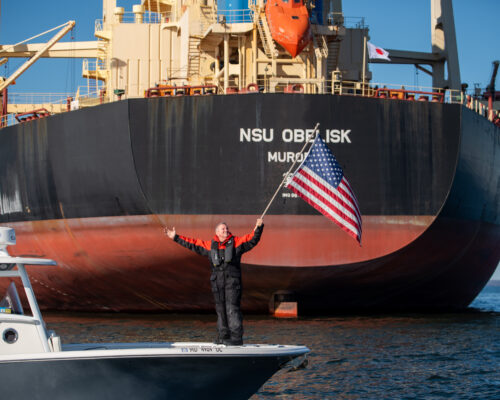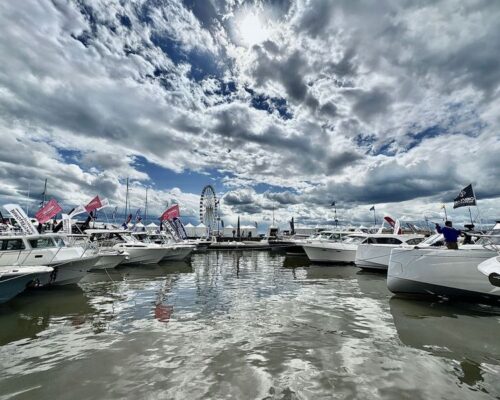“It’s ironic: the Bay gives, and the Bay takes away.” This poignant line is spoken by a native Tangier Island waterman in the new, feature-length film Been Here, Stay Here, which will be shown at next month’s Annapolis Film Festival.
When the film festival opens March 27, it will show more than 70 meticulously vetted films at venues throughout Maryland’s capital. One of the mainstays of the 13-year-old festival is the Environmental Showcase, for which a film is chosen to provoke conversation about major environmental issues facing the United States, and especially the Chesapeake Bay.
Been Here, Stay Here, the festival’s 2025 Environmental Showcase selection, allows audiences to experience a deeply personal journey to Tangier Island. Filmmaker David Usui, of Brookyln, New York’s Lost & Found Films, captures the lives of modern Tangier islanders in a way we haven’t seen before. He employs a series of techniques that allow the viewer to experience daily life from the islander’s perspective—rather than from an outside journalist’s eye.

While publications like Chesapeake Bay Magazine have been covering the island’s unique water-centric lifestyle for decades, Tangier received a flurry of national attention beginning in 2017, when news outlets painted the island’s disappearing shoreline as a cautionary tale for climate change. That year, a widely-viewed CNN story showed a dire view of an island in crisis. The story attracted the attention of media outlets worldwide, some of whom portrayed Tangier’s residents as climate change deniers who blamed the island’s land loss on erosion and the land subsidence (settling) instead of sea level rise. These media reports were provocative because they showed a place where impacts were not decades away, they were already happening.
Usui took in these reports, and was fascinated by the island and the issue. However, he tells Chesapeake Bay Magazine from New York, his interest was much different than that of the major news networks. Usui says that unlike most reporters, he wanted to “not just go for a day, but get beyond the surface…immerse myself.”
And immerse himself he did. Usui began traveling back and forth between New York and Tangier in early 2018. Usui did not even bring a camera onto the island until late 2019. He spent almost two years getting to know the waterman lifestyle, the dynamics of the island community, and their central Christian beliefs. Along the way, he fell in love with the people of Tangier.
When Usui did bring his film crew from New York, he took a different approach than many modern-day filmmakers would. His team spent two years traveling back and forth, spending a full week of each month on the island. They had the opportunity to capture every season of the water-driven lifestyle—the traditional Blessing of the Fleet, crabbing, oyster harvesting, waterfowl hunting, thunderstorm season, even Halloween trick-or-treating along the high tide.
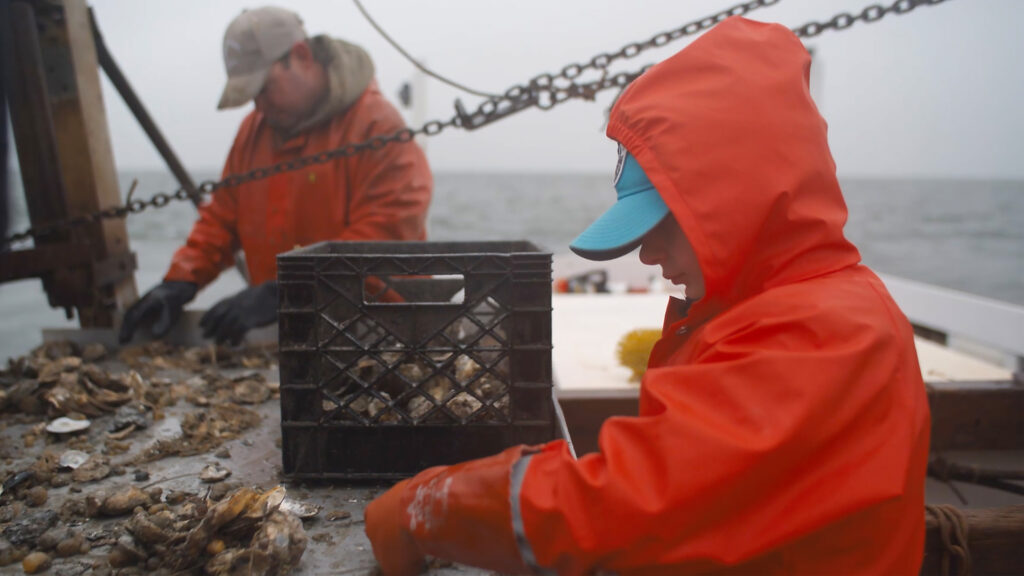
When I asked how many filming hours it took to encapsulate all of the island’s seasons, Usui tells me he intentionally limited shooting time. In today’s digital documentary making, the industry standard is to shoot up to 400 or 500 hours of footage for a 90-minute feature. But Usui treated his shoots more like the old days of film cameras—as though every roll is costly and precious. On Tangier, using the camera sparingly allowed Usui to keep his relationship with the islanders genuine and less obtrusive.
“We wanted to be respectful in not bringing out the camera except when it made sense,” he says. “Entire days would go by where we shot b-roll [of the island environment], but no individuals.” In all, they shot less than 80 hours of footage.
Usui’s mindful approach comes through in his audio choices, too. He creates the quiet and tranquility one would experience on Tangier by using natural, ambient sounds, periods of silence, and overheard conversations rather than direct, first-person interviews with fast-paced edits.
At the start, the audience follows visitors arriving on the island, making us feel as though we’re boarding a golf cart tour of our own. For the film’s point of view, Usui creates an “observational” gaze. No one from his film crew appears on camera, nor do the Tangier residents ever address the camera directly. As viewers, we’re simply along for the ride, in an intimate island experience.
The film follows the lives of three islanders: Mayor James “Ooker” Eskridge, a 65-year-old sixth-generation waterman; Cameron Evans, 20, a college student who studies on the mainland and is acutely aware of his changing landscape; and Jacob Parks, just seven, who is learning the ways of the waterman at a tender young age.
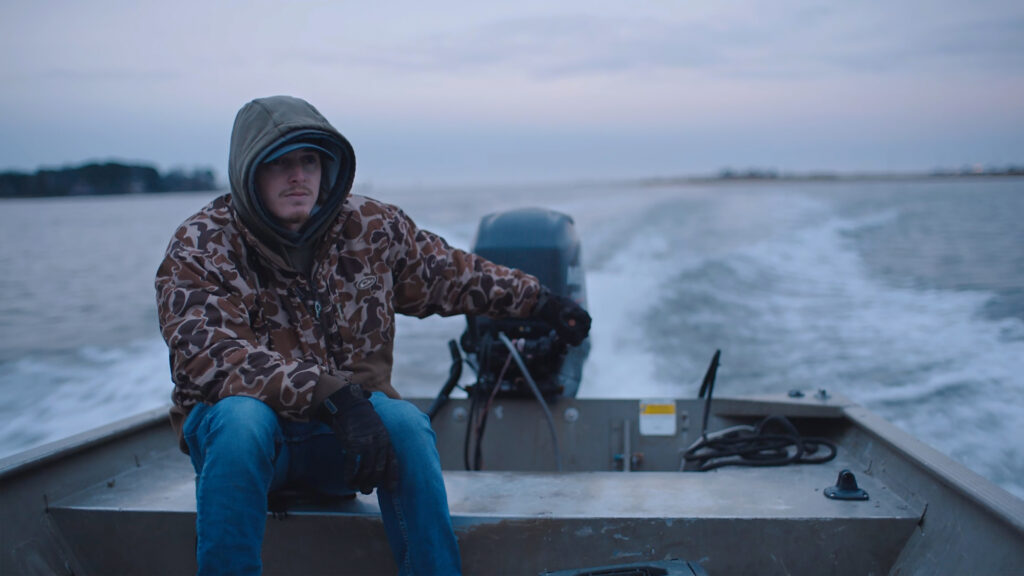
“You can’t help but feel the history being passed through the island, generation to generation,” Usui says. The theme of young and old is powerful throughout the film, as all three islanders face the uncertain future of their disappearing island.
It’s poignant to see Eskridge in a moment of vulnerability, talking about aging. Or Evans, sitting around a bonfire trying to explain the Tangier islanders’ mentality to students from the mainland. Most riveting is to see Jacob Parks, on the water alone in a dinghy with a tiny outboard motor, buzzing around to check each of his hand-set crab traps.
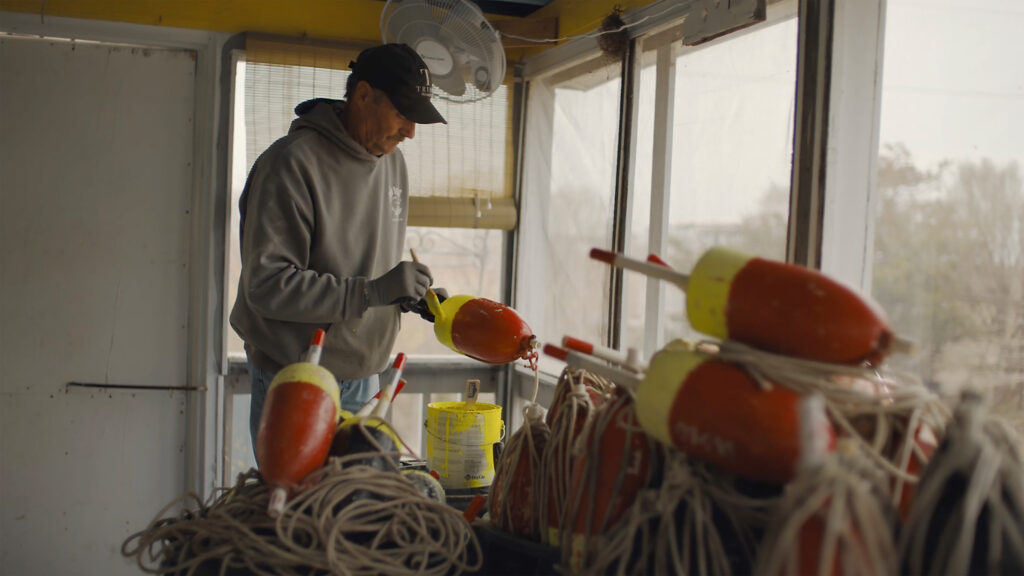
The depth of the residents’ trust in Usui is evident throughout the film. Usui says that because Tangier’s neighbors function more like “one giant family” than a typical community, it was a trust exercise for them to allow him to tell their story.
Mayor Eskridge tells Chesapeake Bay Magazine that he advised residents to be open to media coverage, in hopes that the attention would lead to action. Islanders have long been calling for a rock jetty to protect the island’s east side from the Nor’easters that batter the shore. “The more we’re in the spotlight,” Eskridge says, “the better chance we have of getting the help that we need.”
Thanks to Eskridge’s encouragement and Usui’s efforts to tread lightly, the audience is able to witness moments visitors wouldn’t see. The camera operator is inside the duck blind with the islanders on one cold morning. Real conversations between watermen are captured in Eskridge’s “Situation Room”, revealing their true thoughts about sea level rise.
There is even a sparing amount of footage from inside island church services. Usui weaves audio from prayers spoken by islanders with his stunning shots of the island’s changing seasons, which proves to be a moving technique—both for the general audience and the islanders themselves. “Faith pays an important role on the island with the people,” Eskridge points out.
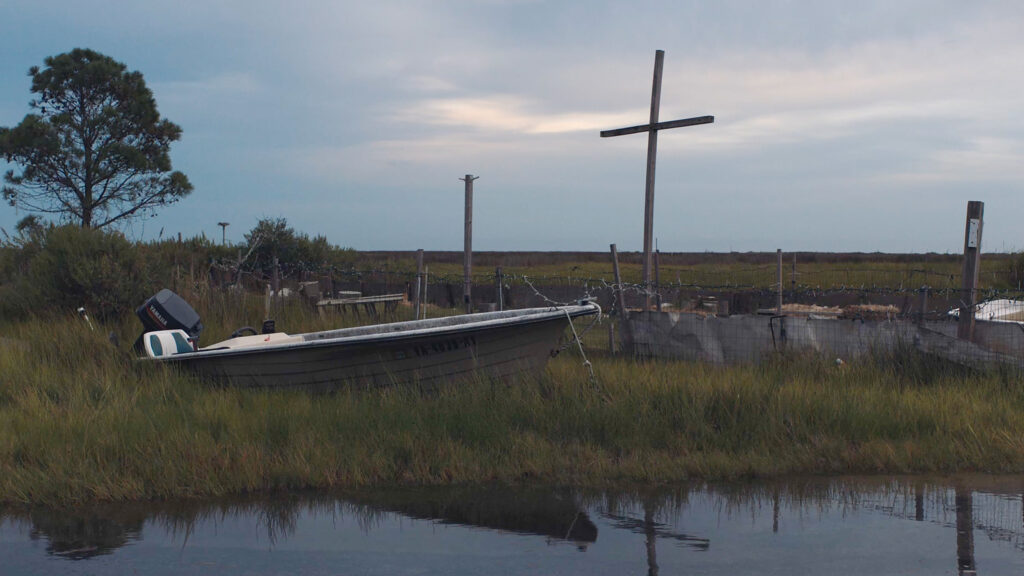
When Usui brought the film for its subjects to watch for the first time in September 2024, the reaction was very positive. “It’s a wonderful story, not because I’m in it,” Eskridge says tongue-in-cheek, “but I like how he went about it. The story he told… will touch people.”
The film keeps its integrity as a “people story” from beginning to end. The filmmaker says it is about building bridges, highlighting our shared experiences and not our differences.
Perhaps the strongest evidence that the film succeeded in building bridges is this: some of its subjects will be coming to the Annapolis Film Festival to participate in a panel discussion alongside Usui after the screening on Friday, March 28. It’s a rare opportunity to hear insights directly from the people of Tangier, united with the man who told their story.
Chesapeake Bay Magazine is a proud media sponsor of the Annapolis Film Festival. Been Here, Stay Here will be shown at Maryland Hall (801 Chase Street, Annapolis) Main Theater during the Environmental Showcase. Look out for a possible second showing on Saturday, March 29. Festival-wide passes are on sale now, and individual film tickets go on sale March 7.
Note: in addition to its Annapolis Film Festival screening, Been Here, Stay Here will also be shown at the DC Environmental Film Festival Tuesday, March 25. Keep an eye on the film website for updates on other screening opportunities.

